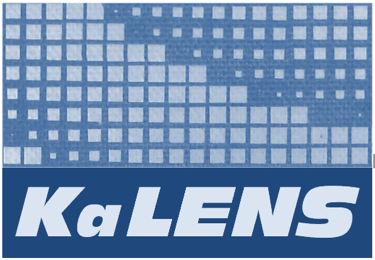Terahertz Reconfigurable Metasurfaces for ultra-high rate wireless communications
The sixth generation (6G) of mobile communications, planned around 2030, is expected to support innovative applications with requirements not met with today’s technologies, such as massive-scale communications (within IoT), the Internet of senses, holographic communications, massive digital twinning and Extreme Reality, full autonomous driving and flying networks, considering use cases in smart cities, smart home and factories (e.g. ultra-high precision 3D positioning). With the emergence of viable THz communications systems on the horizon, it is crucial to contribute THz communication and networking to the technology roadmap for beyond 6G timeframe and a step closer to industrial uptake. The TERRAMETA project aims to investigate revolutionary technologies for 6G and demonstrate the feasibility of Terahertz (THz) Reconfigurable Intelligent Surface (RIS) assisted ultra-high data rate wireless communications networks. Novel high-performance hardware including the THz RIS and THz transmitter/receiver will be developed and advanced network analysis/optimizations techniques will be developed using these real THz components. The proposed TERRAMETA THz network will be driven by 6G usage scenario requirements and indoor, outdoor, and indoor-to-outdoor scenarios will be demonstrated in real factory setting and telecom testing field. It is expected that the outcome of this project will significantly progress innovations for across the 6G Technology and systems.
Informação do Projeto
2023-01-01
2026-01-01
Parceiros do Projeto
- IT-Iscte
- INESC TEC - Líder (Portugal)
- University of Athens - (Grécia)
- University of Hertfordshire - (Afeganistão)
- University of Oulu - (Afeganistão)
- Intracom Telecom - (Afeganistão)
- IT - (Portugal)
Increased Resolution Microwave Imaging using Superlens
To study the resolution limitations of microwave imaging applied to biomedical applications.To develop a superlens to improve resolution of microwave imaging in the biomedical context.
Satellite-based microwave remote sensing for marine litter mapping
Man-made marine litter constitutes nowadays a major environmental threat. Most of current studies address optical detection techniques, but these have impairments related to lighting conditions, cloud cover and biofouling. Microwave techniques (MW) do not suffer from the previous limitations, therefore, they are a potential resource for detection of marine floating litter. However, to date, there is no systematic characterization of the MW signature of floating plastic. The objective of the project is to characterize the MW response of floating macroplastic, to find the most favorable MW sensing modality, best frequency bands and, for each one, find the minimum required concentration of the litter and size of the patch for positive detection. The study will consider known active radar imaging and non-imaging techniques as well as passive radiometric techniques. It will include the development or extension of known data processing and analysis methods to favor the detection of plastic litter.
New Space Portugal
The consortium "New Space Portugal" will establish, for the first time in Portugal, the capacity to design, develop and produce complete satellites, payloads and offer high added value tradable services, based on the exploitation of Earth Observation (EO) data from Space, boosting the national value chain to serve a fast growing market worldwide. In addition, it will expand the portfolio of products and services of the Portuguese satellite operator (GEOSAT), consolidating its position in the European and global markets, and of national companies focused on practical applications of satellite data (downstream), creating a high value-added marketfocused offer. In an integrated manner, "New Space Portugal" will develop and consolidate a longterm space scientific, technological and industrial base in Portugal for the auspicious future of the sector.
Future communications with higher-symmetric engineered artificial materials
Main Objective: SyMat will investigate the lectromagnetic properties of new classes of metamaterials and metasurfaces. They are made of periodic cells invariant under higher symmetries, such as glide or twist symmetries. As an example, while a periodic structure is invariant under translations, a glide-symmetric structure is also invariant under a translation and a mirroring. These symmetries lead to marvelous uncommon properties: ultra large bandwidth of operation, reduced losses, scanning capabilities, and enhanced stopband for Electromagnetic Bandgap materials. They have the potential to meet the expectation of new communication devices.
Informação do Projeto
2019-11-06
2023-11-05
Parceiros do Projeto
Additive Antenna Manufacturing
Additive manufacturing, or 3D-printing, is bringing a revolution to most engineering areas. It is not just about changing fabrication processes and materials, but more importantly, enabling powerful new concepts and designs not feasible or affordable with traditional manufacturing. In parallel, personal communications present a meteoric evolution that impregnates each one’s life and habits. This growth will continue embodying concepts like the Internet of Things (IoT) and next generation mobile communications (5G). It will transparently link much more users, machines, sensors and virtual nodes through land and satellite infrastructures. It requires effective low-cost solutions for mass-market. AM will play a role, and antennas are a key player in wireless systems. The project focuses on the development of new antenna concepts benefitting from opportunities offered by AM, aiming at different aspects of IoT, 5G and associated applications, including body-area networks.
Informação do Projeto
2018-06-01
2021-06-01
Parceiros do Projeto
Development of a European-based Collaborative Network to Accelerate Technological, Clinical and Commercialisation Progress in the Area of Medical Microwave Imaging
Informação do Projeto
2013-11-01
2017-11-01
Parceiros do Projeto
Compact Lens-Based Mechanically Steered Ka-Band user Terminal Antenna
The main objective of the project is to develop a compact low-profile lens-based mechanically steered Ka-band antenna for satellite mobile user terminals. It is intended as a single aperture antenna to operate simultaneously in the downlink and uplink bands with circular polarization, the scanning being achieved by in-plane lens translation over a fixed feed. The pros and cons of translating the feed with fixed lens will be also addressed. Besides the feed design, it requires the identification of an adequate lens type, its fabrication technology and its design.
Informação do Projeto
2013-11-01
2018-10-01
Parceiros do Projeto

 English
English

